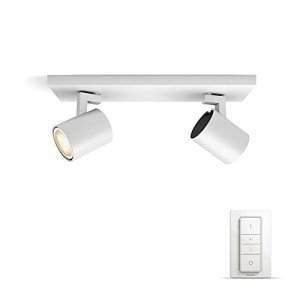This History Behind Contemporary Lighting UK Is One That Will Haunt You Forever!
Contemporary Lighting in the UK: Transforming Spaces with Illumination
Lighting plays a crucial role in specifying the ambiance and functionality of any area. In the UK, contemporary lighting has become a substantial style aspect, using innovative services that blend aesthetics with usefulness. This article delves into the numerous styles, products, and innovations forming contemporary lighting, together with suggestions for picking the most suitable fixtures for different settings.
The Evolution of Contemporary Lighting
Contemporary lighting in the UK reflects the changing tastes and technological advancements in design. It encapsulates a broad selection of styles, consisting of:
Minimalist: Characterized by simpleness and clean lines, minimalist lighting fixtures focus on kind and function without unneeded embellishments.
Industrial: Inspired by urban settings, industrial lighting combines raw products like metals and woods with strong designs, creating edgy, practical pieces.
Scandinavian: Known for its heat and simpleness, Scandinavian lighting often includes soft colors and natural materials, focusing on developing a cozy atmosphere.
Smart Lighting: This modern trend integrates innovation with style, enabling users to manage their lighting with mobile apps, voice commands, or automation systems.
To show the development and range in the field of contemporary lighting, think about the table listed below, which highlights essential qualities of different designs.
Design
Secret Characteristics
Popular Materials
Perfect Spaces
Minimalist
Easy, practical designs
Metal, glass, wood
Modern homes, workplaces
Industrial
Raw, unfinished look
Steel, concrete, wood
Lofts, galleries
Scandinavian
Relaxing, warm aesthetics
Natural fibers, light wood
Living spaces, cafes
Smart
Integrated technology, automation
Varies extensively
Residences, offices, retail spaces
Selecting Contemporary Lighting Fixtures
Choosing the ideal lighting fixtures for a space requires careful factor to consider of several factors. Here are crucial elements to remember:
1. Purpose of the Space
Before choosing fixtures, consider the desired use of the location. Different functions require different kinds of lighting:
- Task Lighting: Focused lighting for activities such as reading, cooking, or studying. Examples consist of table lamps and under-cabinet lights.
- Ambient Lighting: General lighting that offers total lighting. Ceiling lights and pendant fixtures fall under this classification.
- Accent Lighting: Designed to highlight specific features or areas, such as artwork or architectural information. Wall sconces and mounted lights prevail options.
2. Style and Theme
The lighting ought to complement the existing decor. Opt for fixtures that match or enhance the general theme of the area, whether it's contemporary, rustic, or eclectic.
3. Size and Scale
Think about the proportion of the lighting fixtures relative to the space. A big chandelier may look spectacular above a large table, while smaller pendant lights work well in compact settings.
4. Energy Efficiency
With increasing energy costs and ecological concerns, picking energy-efficient lighting choices is vital. LED lights are an excellent option, using longevity and lower energy consumption.
5. Versatility
In modern design, flexibility is essential. Buy Hallway Lighting UK that can be changed or rearranged boost functionality, allowing users to create different atmospheres as needed.
Popular Contemporary Lighting Brands in the UK
The contemporary lighting market in the UK boasts various brands understood for their ingenious styles and quality workmanship. Some noteworthy points out include:
- FLOS: An Italian brand commemorated for its artistic and renowned light fixtures that frequently double as pieces of art.
- Tom Dixon: A British designer acknowledged for his modern, industrial designs that wonderfully integrate metal and light.
- Anglepoise: Known for its versatile, practical lamps, perfect for a variety of settings from home workplaces to innovative studios.
- John Lewis: Offers a variety of contemporary lighting solutions that cater to a more comprehensive audience, including affordable yet elegant options.
Frequently Asked Questions about Contemporary Lighting in the UK
1. What is contemporary lighting?
Contemporary lighting refers to lighting styles and fixtures that reflect present design patterns, often identified by clean lines, innovative shapes, and making use of modern products and technologies.
2. How do I select the ideal lighting for my home?
Think about the function of the room, existing decoration, size of fixtures, energy effectiveness, and flexibility. Assess how each piece will contribute to the general atmosphere and performance of your area.
3. What are some energy-efficient lighting alternatives offered in the UK?
LED lights are the most popular energy-efficient choice, known for their long lifespan and low energy intake. Compact fluorescent lights (CFLs) and halogen bulbs are other alternatives.
4. Where can I purchase contemporary lighting in the UK?
Contemporary lighting can be discovered in different retail outlets, both online and in physical shops. Noteworthy sellers consist of John Lewis, Habitat, and specialized lighting shops.
5. Can contemporary lighting work in traditional spaces?
Absolutely! Contemporary lighting can boost traditional spaces when chosen attentively. Selecting fixtures with a balance between modern and timeless components can create an unified design.
Contemporary lighting in the UK represents more than just illumination; it embodies design innovation and creativity, changing areas and improving functionality. As patterns continue to evolve, homeowners and designers alike can explore an expansive variety of designs and technologies, making sure that every room bursts with life, warmth, and character. By thinking about the necessary factors detailed in this post, one can curate a collection of lighting fixtures that resonates with personal design and meets practical needs, eventually forming comfy and aesthetically appealing environments.
